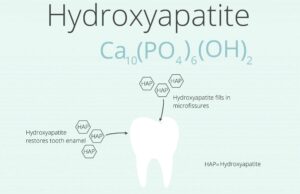The oral cavity is very complex and delicate, and any abrupt change or imbalance in diet could trigger an inflammatory reaction. One such manifestation of inflammation could be transient lingual papillitis (TLP), also known as “lie bumps”. The occurrence of small red or white bumps on the tongue is very common but painful and transient. Normally, it lasts for a few days and heals naturally, but if it lasts longer you should consult your dentist or oral hygienist as it could be a sign of another underlying medical condition.
What is Transient Lingual Papillitis?
As the names suggest, TLP is painful inflammation on the tip of the tongue, which is temporary in nature. Though the exact reason for TLP is not known, you will experience acute onset of red or white bumps on your tongue, which could be painful and uncomfortable, at least for a few days. It usually goes away in 2-3 days, but with some medication or home remedies you can control pain and speed up the recovery.
Whatever could be the reason for TLP, but it is definitely not your lying habit, as popularized in myths.
What Are Symptoms of Lie Bumps?
Transient lingual papillitis or lie bumps are very common and affects people of all age groups. You might experience the growth of pimple-like small bumps on the surface of the tongue with the onset of TLP. The size of bumps on the tongue could vary, but these bumps can cause pain, itching, burning, or tingling sensation. Some people experience growth of bumps, but no other related symptoms.
If the pain and discomfort are acute along with other symptoms then it could be eruptive lingual papillitis (ELP). Symptoms are more or less the same as TLP, but they could be caused by a virus. In ELP, you might experience swelling of glands, accompanied by fever. It is more common in children and lasts for 7 to 14 days. So, if you notice symptoms you should better consult your doctor so that he diagnoses and prescribes suitable medication to ease pain and speed up recovery. Some of the common symptoms of transient lingual papillitis are:
- Growth of bumps could make you uncomfortable
- It might cause pain
- You might experience mild swelling of the tongue
- In some case, it could be itchy
- Some people report a tingly sensation
- If symptoms include swelling of glands and fever, it could be ELP. Since it lasts longer you might need medical intervention to ease discomfort and control the spread.
Causes of Transient Lingual Papillitis
Lie bumps are very common, but there is not much research on what causes these bumps. It is considered an inflammatory disease, but the underlying causes of the disease are not clear. Though not harmful, the occurrence of TLP is more common among people who love eating lots of sugary and highly acidic foods. The oral hygienist and diet experts believe lie bumps (TLP) could be caused by factors, including:
- Eating spicy foods
- Acidic food or sugar-rich diets
- Stress could also cause an inflammatory response in the tongue
- Accidental biting of tongue and related infection
- Burning of the tongue caused by super hot drink or food
- Digestive malfunction, such as dehydration and constipation
- Nutritional imbalance
- Allergic reaction to some food items
Whatever is the cause, but the onset of TLP could be painful and makes eating regular food difficult for a few days. Maintain standard oral hygiene to keep inflammation in check, as it will naturally ease in 3-4 days. If it sustains longer, you should get in touch with your dentist to know about the possible cause.
How are lie bumps diagnosed?
Usually, TLP symptoms go away in 3-4 days, but if symptoms persist with pain you should seek medical intervention as this could be related to some other underlying condition. If lie bumps recur in children you should better get in touch with your pediatrician for a thorough diagnosis.
If pain and discomfort are affecting your normal life, you should better consult your doctor immediately so that he could prescribe some anti-inflammatory and pain killer medication.
In most cases, visual examination is enough for your doctor or dentist to identify TLP. However, if not sure whether it is TLP or something else such as human papillomavirus (HPV), he may recommend some tests, such as biopsy for differential diagnosis. For the biopsy, he will numb the area using local anesthesia and remove a section of the bump for further microscopic examination. Meanwhile, he will prescribe some medication to ease your pain.
How Transient Lingual Papillitis is Treated?
Transient lingual papillitis or lie bumps are very common and in most cases, it doesn’t require medical intervention. Red or white bumps on the tongue usually go away in 3-4 days without any medication. However, if it is painful and recurs you should consult your dentist or doctor for standard treatment. You can try these at-home treatments to ease pain and quicken the recovery:
- Although the origin of TLP is not known, oral care experts recommend rinsing and gargling with salt water to control microbes outgrowth in the mouth
- Brush at least twice to keep harmful bacteria growth in check
- Use any standard mouthwash after every meal to keep the infected area bacteria-free
- By avoiding spicy and acidic foods you can reduce the discomfort
- Oral care professionals recommend the application of topical treatments to cover the bumps like a bandage to minimize the damage caused by friction
When to See a Doctor or Dentist?
If the red or white bumps on your tongue are TLP it will go away without any specific medication in just 3-4 days. However, if it is not TLP and you are feeling swelling and feverish, you should consult your doctor or dentist. Following thorough examination and tests, your doctor will prescribe suitable medications to control the spread and ease the pain. You should visit your doctor, if:
- Bumps do not go away within a week
- Pain is unbearable
- Recurs frequently despite maintaining good oral care practices
- Bumps bleed on the application of some pressure
What Are the Other Causes of Bumps on the Tongue?
Oral muscles are soft and delicate, so very prone to injuries and infection. Billions of bacteria thrive in oral space, thus making the space highly sensitive to infections. Bumps are pretty common and in most cases, these are caused by TLP or ELP. If bumps are not due to TLP, then the cause could be some other underlying conditions, including:
Human papillomavirus (HPV): Bumps on the tongue could be caused by HPV, a highly contagious viral infection that spreads through skin-to-skin contact. The infected person might experience the growth of lumps in the genitals, throat, and tongue.
Canker sores: Though not contagious, these can grow anywhere in the mouth with symptoms like pain and red sores. These bumps also go away without treatment in 10 days.
Syphilis: Bump in mouth, not so specifically on the tongue, could be an early sign of syphilis. This bacterial infection is sexually transmitted and painless sores could develop in the genitals, rectum, and mouth. You will need standard medication to avoid damage to the brain, nerves, heart, and eyes.
Scarlet fever: Bumps on the tongue could be caused by scarlet fever. The onset of this bacterial infection could show symptoms like red bumps on the tongue, along with sore throat and fever.
Mouth cancer: Though very rare, red or pink bumps on the tongue could be a cancerous growth. If bumps are on the side of the tongue and bleed on touch, you should get in touch with your doctor for further diagnosis.
Are transient lingual papillitis or lie bumps bad?
The growth of bumps on the tongue could be painful and affect your daily life for a few days, but it is not dangerous. It heals naturally without medication in 3-4 days. However, if the pain persists for long and bumps recur you should consult your dentist for further diagnosis and treatment as these could due to eruptive lingual papillitis (ELP) or human papillomavirus (HPV), or anything else.
Does Lie Bumps Affect Taste Capability?
The reason for lie bumps is not clear but is more common among people who prefer eating spicy and acidic foods. Since taste buds (papillae) get affected in TLP or ELP, you might experience some change in taste capability. In most cases, patients regain normal taste in 3-4 days by avoiding hot and spicy food and eating cold foods and fluids.
Outlook
Transient lingual papillitis or lie bumps are definitely not a cause for concern. But the challenge is in not knowing whether bumps are TLP, ELP, or caused by other underlying conditions like HPV, syphilis, or others. Lie bumps usually go away in 3-4 days with at-home treatments. It might be painful for a few days, but if it fails to ease in 3-4 days and you are experiencing other symptoms and fever and itching, you should consult your doctor or dentist for further examination and treatment.
Sources:
- Whitaker, S. B., Krupa III, J. J., & Singh, B. B. (1996). Transient lingual papillitis.
https://www.sciencedirect.com/science/article/pii/S107921049680312X - Lacour, J. P., & Perrin, C. (1997). Eruptive familial lingual papillitis: a new entity?.
https://onlinelibrary.wiley.com/doi/abs/10.1111/j.1525-1470.1997.tb00419.x - Attner, P., Du, J., Näsman, A., Hammarstedt, L., Ramqvist, T., Lindholm, J., … & Munck‐Wikland, E. (2010). The role of human papillomavirus in the increased incidence of base of tongue cancer.
https://onlinelibrary.wiley.com/doi/abs/10.1002/ijc.20490 - Nikitakis, N. G., & Brooks, J. K. (2011). Sensitive red bumps on the tongue. Transient lingual papillitis.
https://europepmc.org/article/med/21613045



